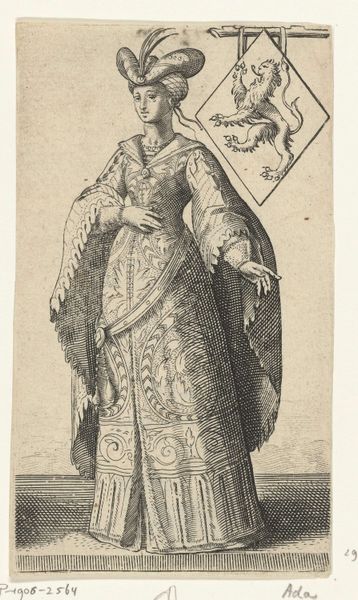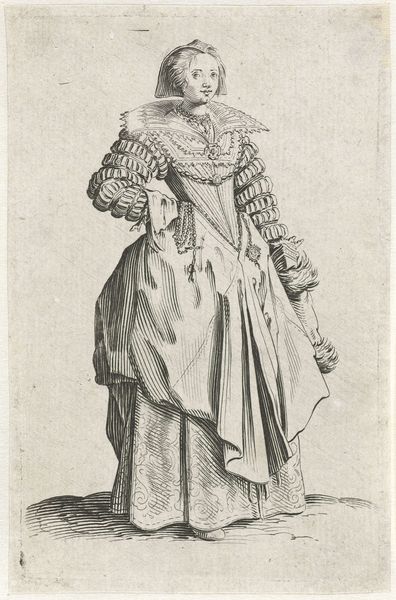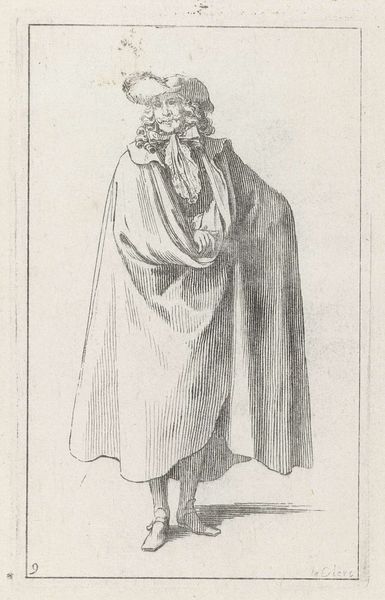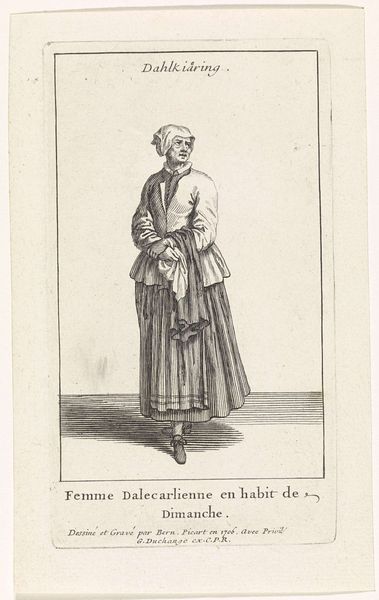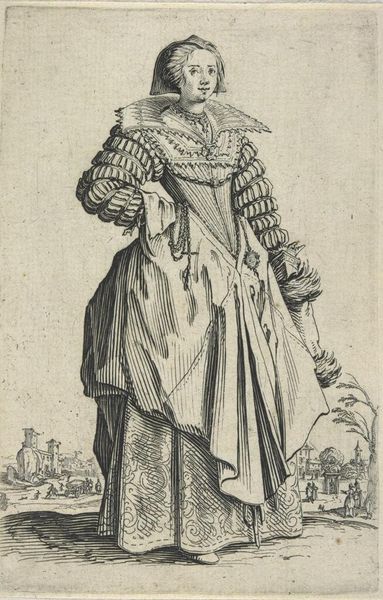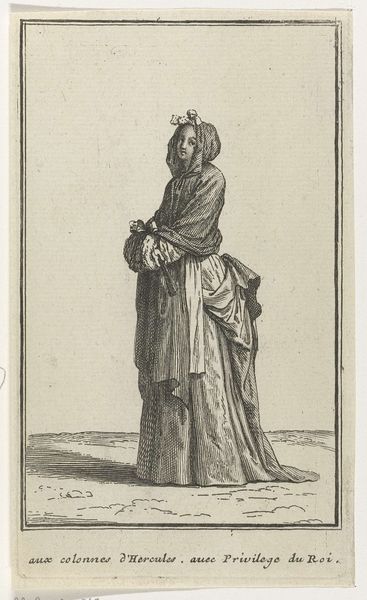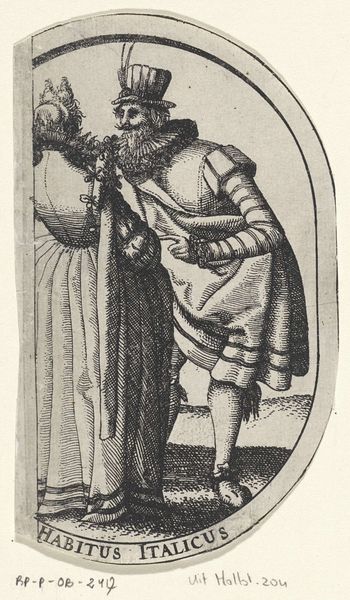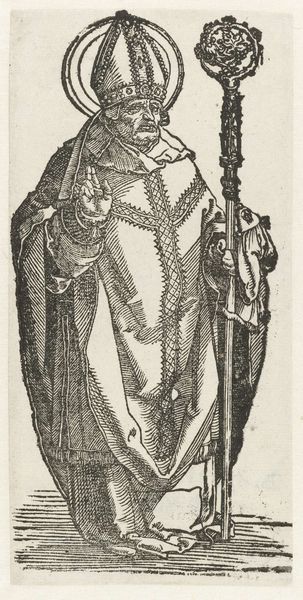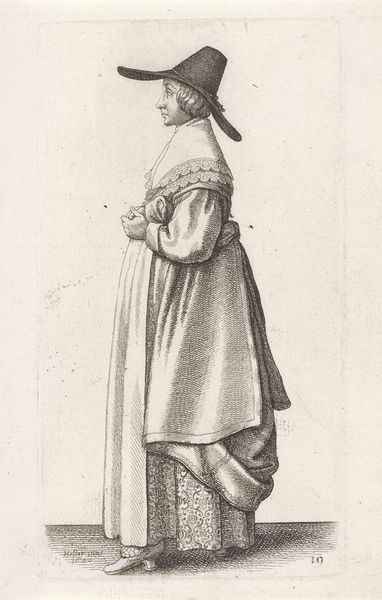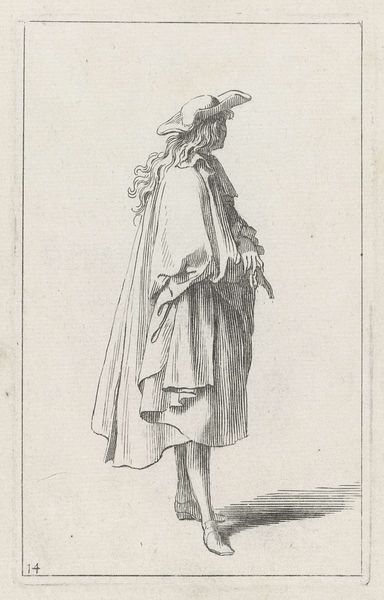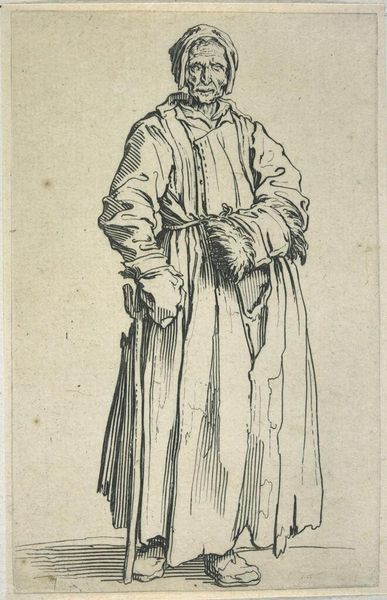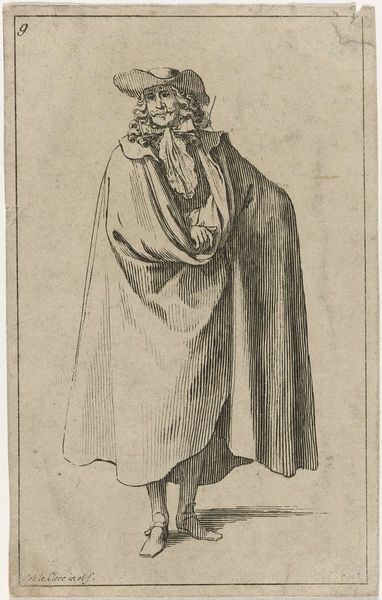
engraving
#
portrait
#
baroque
#
figuration
#
history-painting
#
engraving
Dimensions: height 194 mm, width 73 mm
Copyright: Rijks Museum: Open Domain
Curator: Upon first glance, this etching—"Noblemen from Different Countries" created around 1615 by Willem Pietersz. Buytewech—strikes me with its somewhat melancholic mood, though there's also a sharp elegance in its lines. What catches your eye initially? Editor: Well, ignoring the subject for a moment, it's the etching process itself. The layering of lines to create shading, the density varying across the figure...you see the labor that went into producing this image. This print likely circulated amongst a burgeoning middle class hungry for markers of status. Curator: Precisely, the textures he achieves are remarkable, especially in the rendering of the clothing. Note how the lines defining the ruff contrast with the broader strokes creating the billowing breeches. Buytewech's strategic deployment of hatching gives volume. Editor: Yes, and consider the material implications. Copper plates weren’t cheap. The ink, the paper – these prints, while more accessible than oil paintings, were still commodities that signified access, even aspirational access, to higher social strata. They weren’t mere decoration; they signaled social ambition. Curator: Intriguing. Let's bring it back to formal qualities and context. The baroque period was about to peak during the following decade. Consider how the subject seems to lean forward slightly; this pose, almost caught mid-stride, imbues a subtle dynamism. The gentleman is self-conscious in display, as if interrupted while preening. Editor: I agree, the portrait’s emphasis becomes less about a singular individual than about projecting "nobility"—a social performance accessible through sartorial choices replicated and disseminated through prints such as this. Who produced these garments, where were these available? Who purchased these things in hopes of achieving social clout? Curator: Fair questions. While the name indicates nobles "from different countries" implying global influence, perhaps, the dress seems distinctly Dutch. And let's remember this print is just one of a series of costume studies. The artist documented contemporary fashion, almost like a proto-fashion blog if you will. Editor: Right, and within this series the prints served as models for clothing makers, status guide and aspiration images. Its purpose becomes less artistic representation and more of a documentation of mercantile ambitions and labor relationships during the height of Dutch power. Curator: The exchange definitely enriched my viewpoint of "Noblemen from Different Countries." Editor: Yes, indeed, such pieces offer a perspective on art's role within broader societal structures.
Comments
rijksmuseum about 2 years ago
⋮
Both noblemen are fashionably attired in wide, puffy breeches with ribbon garters. The young man holding a plumed hat bears the inscription Frans Edel Man (French nobleman). This, however, was a later addition by the print’s publisher. A French nobleman evidently sold better than an anonymous youth.
Join the conversation
Join millions of artists and users on Artera today and experience the ultimate creative platform.
